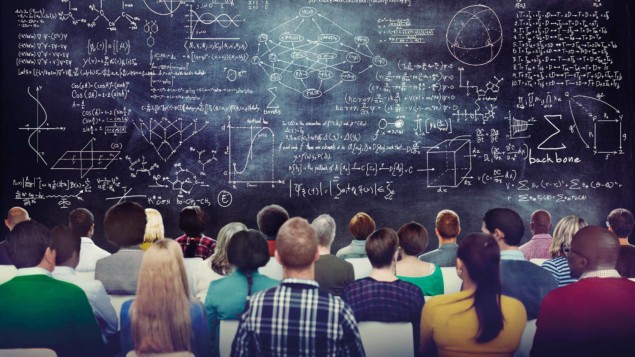David Nolte says it is time to bring the undergraduate physics curriculum into the 21st century

Physics education has a high inertia towards change. While high-school students in today’s biology labs are doing genetic engineering and making bacteria glow green, while students in physics labs are still dropping lead weights and finding differences of squares almost the same way as Galileo did back in 1610. Even as undergraduates, physicists end up learning about topics that were last researched seriously about 100 years ago. The time is overdue for the physics curriculum to catch up with the times.
Open any textbook on modern physics and you will see chapters on the usual topics: special relativity, quantum mechanics, atomic physics, nuclear physics, solid-state physics, particle physics and astrophysics. Missing, however, are modern topics in dynamics that most physicists will use in their careers such as nonlinearity, chaos, network theory, econophysics, game theory, neural nets and curved geometry among many others.
These topics are at the forefront of physics that drive hi-tech businesses and start-ups today, which is where almost half of all physicists end up working. However, they have not yet filtered down to the undergraduate curriculum. And it is my hope is that they soon will.
The purpose of physics
There are two reasons why the physics curriculum lags behind most other disciplines. The first has to do with the expectation that all physics students will become academics. We think such students will see advanced physics topics once they are graduates and therefore restrict the undergraduate curriculum to the basics, the idea being to help them obtain a solid foundation on which they can build later.
This might seem logical, but the problem is that many undergraduate physicists do not go on to postgraduate study. Indeed, in the US, 40% enter the workforce after their undergraduate degree. Even for those who do enrol in graduate studies, a sizable fraction enter graduate programmes other than physics. For these students, the undergraduate curriculum has stranded them with 100-year-old knowledge.
The second reason for the lag in upgrading many physics curricula is the generally false expectation that advanced topics are too conceptually challenging for undergraduates. It is thought that understanding them requires advanced mathematical methods that undergraduates will not yet have mastered. Yet I believe that students are hungry to learn the latest physics and willing to grapple with such concepts.
Fortunately, many of the advanced topics that spark their interest, such as economic dynamics, game theory or network dynamics, have strong phenomenological aspects that can be understood intuitively without the need for advanced mathematics. Students learn concepts quickly and can explore the systems with simple computer codes and interactive websites – such as WolframAlpha – that physics undergraduates are handling better than ever.
Dynamic variations
Modernizing the teaching of classical mechanics by introducing undergraduate students to topics usually reserved for graduate studies is, however, possible. By using the pedagogical principle of multidimensional dynamical flows, many traditional topics take on a new light. For example, within both special and general relativity, dynamics becomes a study of geodesic flows in space–time. Despite the apparently advanced nature of these topics, they can be easily taught by combining linear algebra with partial differentials without requiring students to have seen tensor calculus or differential geometry.
One example of a central archetype that needs updating is the simple harmonic oscillator (SHO). Admittedly, most dynamics can be reduced to a SHO, but it is the most “pathological” of all oscillators: its frequency does not depend on amplitude. While this is a great asset for clocks, it is such a special case that it skews a student’s intuition about real-world oscillators for which anharmonic effects are the rule rather than the exception. Anharmonic oscillators break frequency degeneracy, opening the door to important topics like Hamiltonian chaos and islands of stability while providing the foundation for a broad range of modern topics like synchronization, business cycles, neural pulses and social network dynamics.
Time for change
The time has come to bring undergraduate physics into the 21st century. By relaxing our insistence that every student know how to construct difficult Lagrangians or calculate Poisson brackets (Lagrange and Poisson were at their peak about 200 years ago) there is plenty of room and time in the undergraduate curriculum to introduce them to truly modern dynamics.
This task will be helped in part by burgeoning web resources and the increasing breadth of knowledge that students bring with them. It also will be helped by a new crop of textbooks that adopt a modern view of the purpose of physics in today’s world.
- This is a modified version of an article that first appeared at blog.oup.com/2017/11/modernizing-classical-physics-oxymoron



